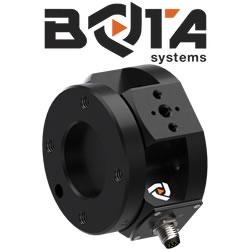How AI, Robotics, and Automation Power Next Generation Pack Assembly
.jpg)
Automation and robotics are revolutionizing next generation pack assembly by combining AI-driven vision, collaborative robots and automated guided vehicles to streamline everything from cell stacking to module joining and final pack validation. Meanwhile, Manufacturers are weighing their capital investments against long-term labor savings, zeroing in on the tasks robots are ready to own today and those that still require human judgment.
Many pilot builds start semi-automated, with humans guiding robotic arms through complex, high-voltage puzzles. As vision systems gain accuracy and cobots learn through machine-learning loops, production shifts toward highly-automated, multi-variant lines that assemble cells in seconds, with no room for error. Yet winning automation strategies are not about going fully lights-out. They focus on right-sizing automation, placing robots where they generate the most value, and empowering people where adaptability and problem-solving matter most.
Successful pack assembly systems balance throughput, quality, and safety in real time. Integration matters more than buying the most sophisticated robots; it comes down to seamless software logic, modular failover paths, and smart system design. For example, Covariant’s AI-powered robot arms now handle goods-to-person bin picking and kitting with rates that exceed human performance, thanks to its Robotics Foundation Model, which ingests text, images and sensor data to improve grasping and sorting over time.
AI vision is transforming blind robotic executors into adaptive learners. Zivid’s 3D color cameras capture high-resolution point clouds that guide cobots through pick-and-place and de-palletizing tasks. A leading battery manufacturer deployed an AI vision defect detection system that initially struggled with limited data, but by generating synthetic defect images and retraining deep-learning models, it now identifies surface cracks and weld anomalies with over 98 percent accuracy.
Redundancy and fault tolerance are baked into modern pack lines. Robotics integrators design parallel robot paths along with shadow stations that can seamlessly take over if a unit fails. Automated guided vehicles ferry modules between work cells, while software monitors real-time throughput and reroutes tasks around bottlenecks. Ford’s Livonia transmission plant, for instance, increased assembly speed by 15 percent when it layered AI-driven motion optimization onto existing robots, showing how incremental improvements can deliver big gains without ripping out entire systems.
Automation and robotics also unlock new safety and compliance capabilities. Automated guided vehicles eliminate pedestrian-robot collisions by mapping human traffic patterns, and power-triggered safety zones automatically halt nearby robotic arms if workers enter restricted areas. In regulated sectors like aerospace and energy, these protocols ensure every weld and fastener meets strict standards, while digital twins run parallel simulations to validate process changes before they hit the production floor.
Capital investment remains a hurdle, especially for midsize manufacturers. Deploying a full suite of cobots, vision systems and AGVs can cost millions of dollars up front. But labor savings compound over time. Amazon’s $100 billion automation push across its fulfillment network reduced order fulfillment costs by 25 percent and is expected to save the company $10 billion annually by 2030, even after factoring in maintenance and software licensing.
Looking ahead, IoT sensors and data analytics will turn routine quality checks into predictive maintenance engines. Embedded sensors can monitor torque during module joining and report deviations before they cause downtime. Analytics platforms will aggregate this data to flag drift in assembly parameters, triggering on-the-fly calibration or scheduling robot servicing. Eventually, engineers will rely on real-time dashboards that blend sensor feeds, digital twin alerts and production metrics, making surprise line stoppages a thing of the past.
The future of pack assembly lies in hybrid work cells where humans and robots collaborate seamlessly. Robotics take on repetitive, precision-driven tasks, freeing engineers to focus on process innovation and continuous improvement. As AI models learn from every cycle, robots will adapt to new cell formats and materials with minimal reprogramming. By right-sizing automation, investing in smart integration and embracing AI-driven vision, manufacturers can unlock safer, faster and more flexible pack assembly lines that meet today’s demands and tomorrow’s uncertainties.
 Kartik Gurav is a manufacturing engineering leader specializing in battery pack production systems, automation strategy, and global equipment ramp-ups. With over a decade of experience spanning high-speed consumer goods and next-generation electric vehicle platforms, Kartik has led critical production launches that saved hundreds of millions in cost and enabled gigawatt-hours of new capacity. Kartik holds a Master’s degree in Product Development Engineering from the University of Southern California and certifications in Six Sigma, Project Management, and Smart Manufacturing.
Kartik Gurav is a manufacturing engineering leader specializing in battery pack production systems, automation strategy, and global equipment ramp-ups. With over a decade of experience spanning high-speed consumer goods and next-generation electric vehicle platforms, Kartik has led critical production launches that saved hundreds of millions in cost and enabled gigawatt-hours of new capacity. Kartik holds a Master’s degree in Product Development Engineering from the University of Southern California and certifications in Six Sigma, Project Management, and Smart Manufacturing.
Comments (0)
This post does not have any comments. Be the first to leave a comment below.
Featured Product

